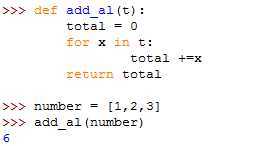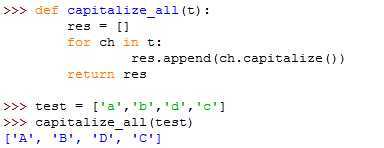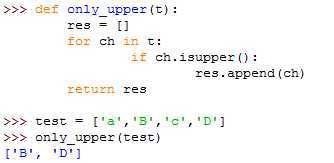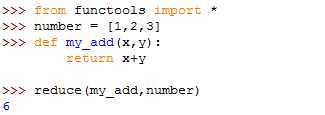标签:des style blog http os 2014
To add up all the numbers in a list, you can use a loop like this:

Total is initialized to 0. Each time through the loop, x gets one element from the list. the += operator provides a short way to update a variable:
Total += x is equivalent to: total = total + x
As the loop executes, total accumulates the sum of the elements; a variable used this way is sometimes called an accumulator. Adding up the elements of a list is such a common operation that Python provides it as a built-in function, sum:

An operation like this that combines a sequence of elements into a single value is sometimes called reduce. Sometimes you want to traverse one list while building another. For example, the following function takes a list of strings and returns a new list that contains capitalized strings:

res is initialized with an empty list; each time through the loop, we append the next element. So res is another kind of accumulator. An operation like capitalize_all is sometimes called a map because it ‘maps’ a function (in this case the method capitalize) onto each of the elements in a sequence.
Another common operation is to select some of the elements from a list and return a sublist. For example, the following function takes a list of strings and returns a list that contain only the uppercase strings:

isupper is a string method that returns True if the string contains only upper case letters. An operation like only_upper is called a filter because it selects some of the elements and filters out the others.
Most common list operations can be expressed as a combination of map, filter and reduce. Because these operations are so common, Python provides language features to support them, including the built-in function reduce and an operator called a ‘list comprehension’. But these features are idiomatic to Python.

Another simple way:

list comprehension
A compact way to process all or part of the elements in a sequence and return a list with the results. result = [‘{:#04x}‘.format(x) for x in range(256) if x % 2 == 0] generates a list of strings containing even hex numbers (0x..) in the range from 0 to 255. The if clause is optional. If omitted, all elements in range(256) are processed.
from Thinking in Python
Map, filter and reduce,布布扣,bubuko.com
标签:des style blog http os 2014
原文地址:http://www.cnblogs.com/ryansunyu/p/3841272.html